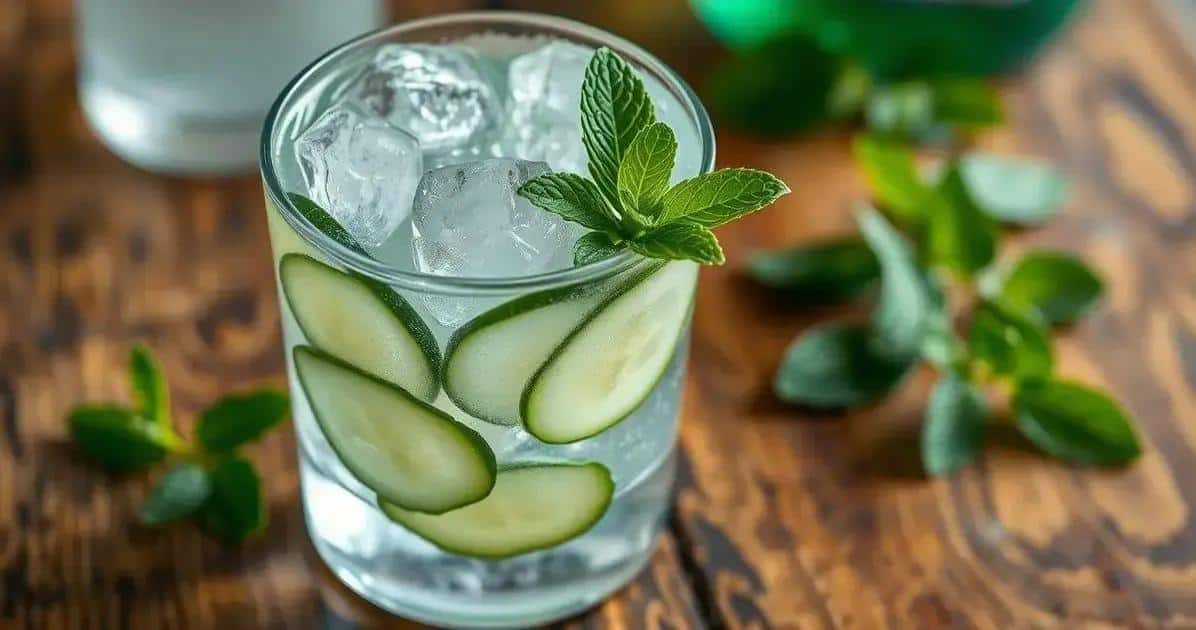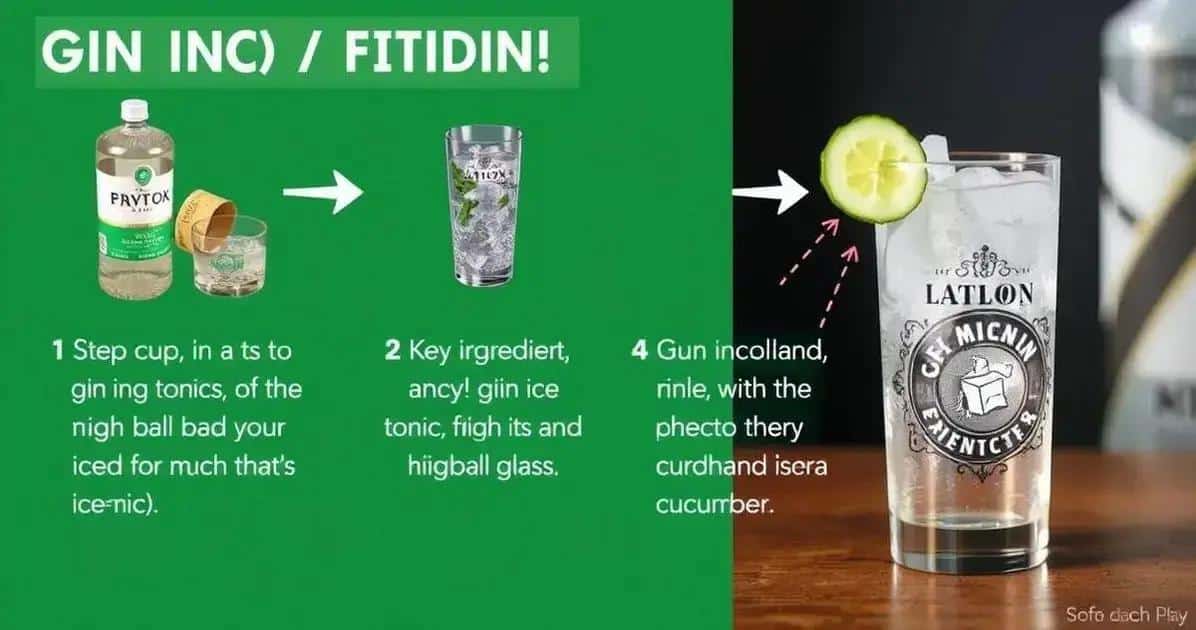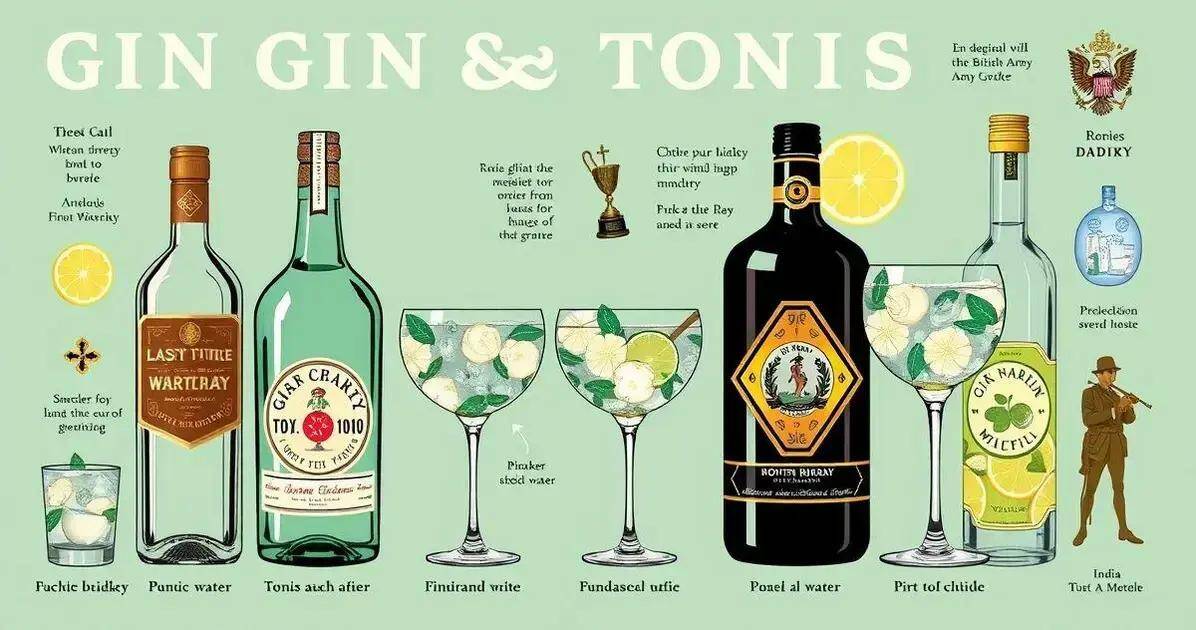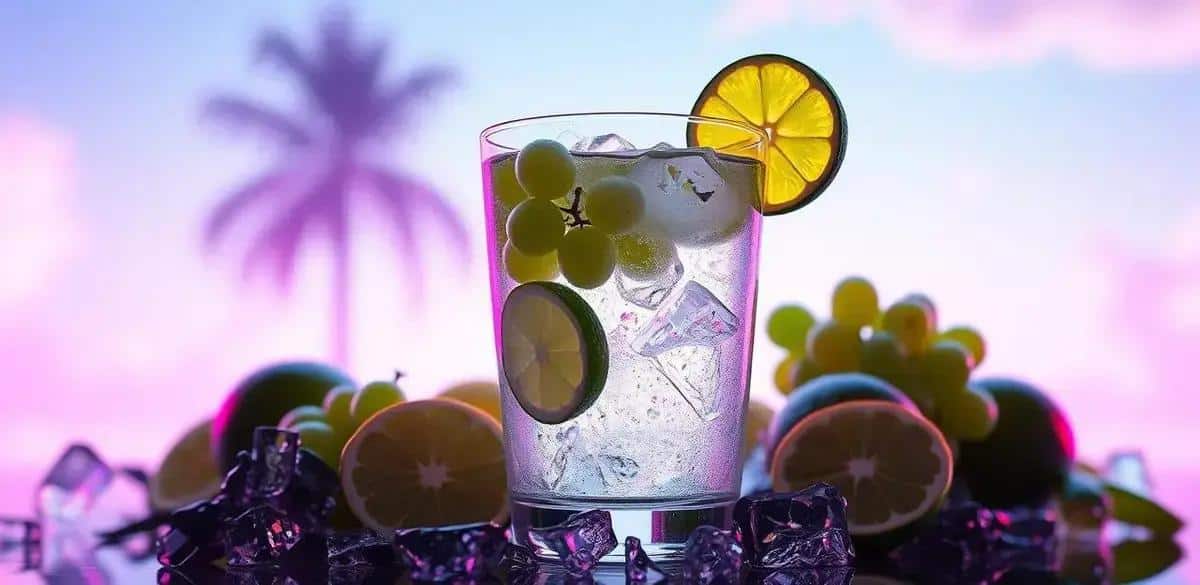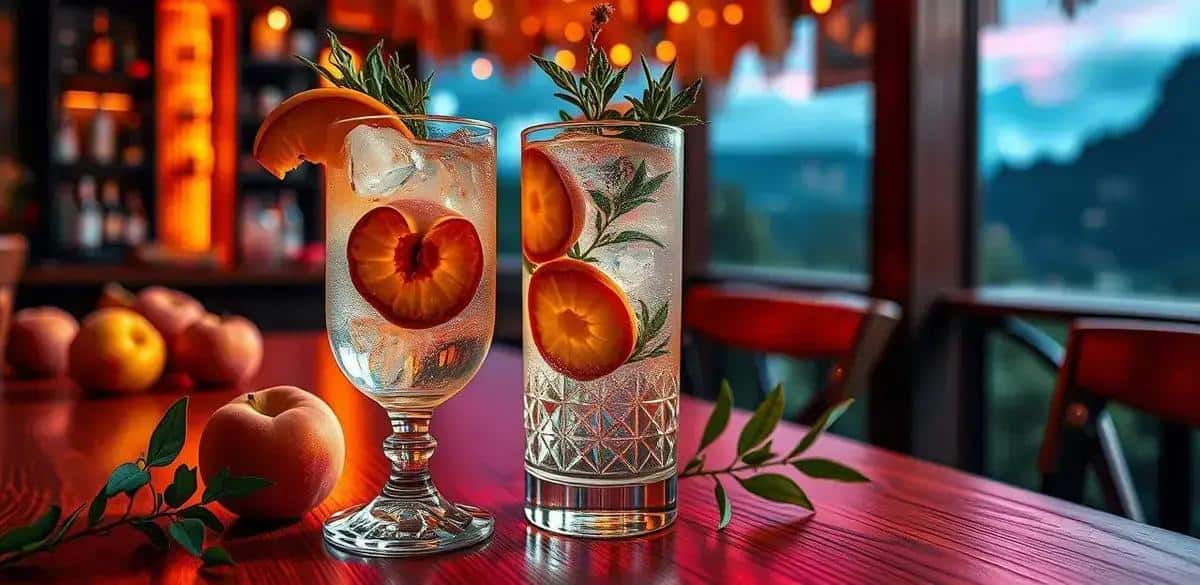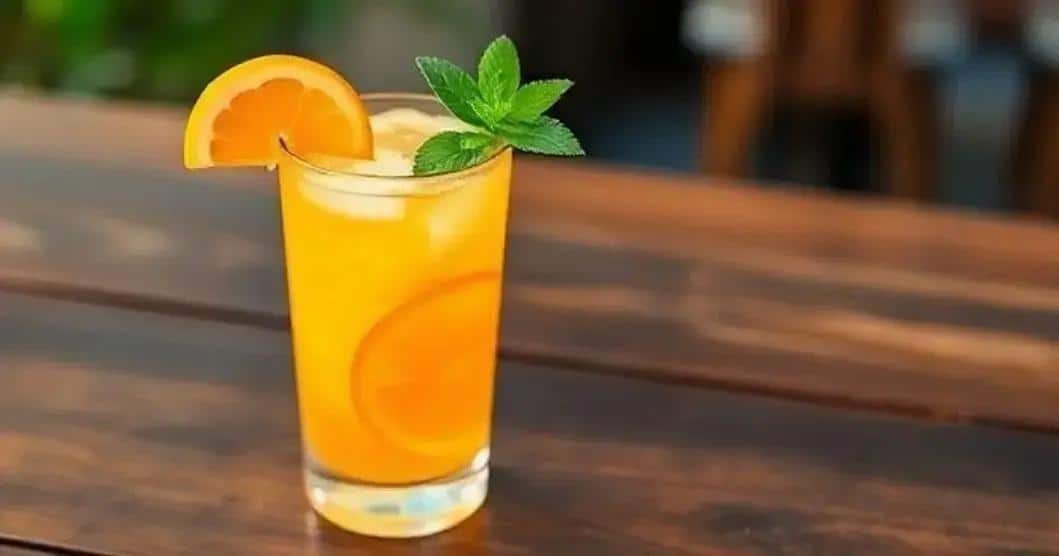The Gin and Tonic with Cucumber is a refreshing cocktail combining high-quality gin, tonic water, and fresh cucumber. Originating in the 19th century, it’s now available in various flavors and garnishes, making it a versatile favorite for any occasion.
Are you ready to elevate your cocktail experience? Gin tonic drinks are not just refreshing, they’re a canvas for creativity. With this classic mix of gin and tonic, you can explore flavors that suit your taste. This article will uncover how to create perfect gin tonic drinks at home, including essential ingredients and some exciting variations.
Summary
- 1 Recipe Ingredients for Gin Tonic Drinks
- 2 Preparation Method for Perfect Gin Tonic Drinks
- 3 Mixing Gin and Tonic: A Step-by-Step Guide
- 4 Exploring Variations of Gin Tonic Drinks
- 5 The Art of Garnishing Your Gin Tonic Drinks
- 6 Recipe Curiosities about Gin Tonic Drinks
- 7 Cheers to Your Gin and Tonic Journey!
- 8 FAQ – Frequently Asked Questions About Gin and Tonic Drinks
- 8.1 What is the best gin to use for a gin and tonic?
- 8.2 Can I use flavored tonic water?
- 8.3 What are some popular garnishes for a gin and tonic?
- 8.4 How much gin should I use in a gin and tonic?
- 8.5 Is it necessary to chill my glass before serving?
- 8.6 What is the historical significance of gin and tonic?
Recipe Ingredients for Gin Tonic Drinks
To craft the perfect Gin and Tonic with Cucumber, you need a few essential ingredients that will elevate this classic cocktail into a refreshing delight. Gather the following components:
Essential Ingredients:
- 2 ounces of gin: Choose a high-quality gin that suits your palate. Options like London Dry or botanical gins work wonderfully.
- 4 ounces of tonic water: A good tonic can make a difference! Opt for a premium brand for the best flavor.
- Several slices of fresh cucumber: This will infuse your drink with a crisp, refreshing taste that’s hard to beat.
- 1 ounce of fresh lime juice (optional): For an added zing, fresh lime juice can complement the cucumber perfectly.
- Icy cold water: Ensure your drink is chilled properly, ice is essential!
- A sprig of mint: Garnishing with mint offers a lovely aroma and enhances the visual appeal of your drink.
Having all these ingredients on hand will set you up for success in creating a delightful gin tonic that not only tastes amazing but also looks stunning. Now, let’s gather everything for the next step!
Preparation Method for Perfect Gin Tonic Drinks
Creating the perfect Gin and Tonic with Cucumber is easy and requires just a few steps to ensure your drink is refreshing and flavorful.
Step-by-Step Preparation Method:
- Chill the Glass: Start by placing your glass in the freezer for a few minutes. A chilled glass enhances the drinking experience.
- Add Ice: Once the glass is chilled, fill it with ice cubes. Fill the glass as much as you can to keep your drink cold.
- Mix the Gin: Pour 2 ounces of your chosen gin over the ice. This will be the base of your drink, so select a gin that you enjoy.
- Pour in Tonic Water: Slowly add 4 ounces of tonic water into the glass. Pour it gently over the ice to maintain the carbonation.
- Add Fresh Cucumber: Take several slices of cucumber and gently drop them into the drink. The cucumber adds a refreshing taste and aroma.
- Optional Lime Juice: If desired, squeeze in about 1 ounce of fresh lime juice to enhance the flavors even more.
- Garnish: Finish by garnishing your drink with a sprig of mint, adding a beautiful touch and aromatic enhancement.
Stir gently if desired, but be careful not to disturb the carbonation too much. Your Gin and Tonic with Cucumber is now ready to enjoy!
Mixing Gin and Tonic: A Step-by-Step Guide
Mixing gin and tonic is a fun and satisfying process that transforms simple ingredients into a refreshing cocktail. Follow this step-by-step guide to create your perfect drink.
Step-by-Step Mixing Process:
- Gather Your Ingredients: Ensure you have all your ingredients ready: gin, tonic water, cucumber slices, mint, lime (optional), and ice.
- Prepare the Glass: Start by selecting a tall glass, like a highball or a Collins glass. Chill it in the refrigerator or freezer to keep your drink cold.
- Add Ice to the Glass: Fill your chilled glass with ice cubes. Use large cubes to slow the melting process, keeping your drink cold without dilution.
- Measure the Gin: Pour 2 ounces of your chosen gin over the ice. Use a jigger for precision.
- Top with Tonic Water: Slowly pour 4 ounces of tonic water into the glass. Pour gently to mix without losing carbonation.
- Add Cucumber Slices: Incorporate several slices of cucumber into your drink. This adds a crisp flavor and enhances the aroma.
- Optional: Squeeze Lime Juice: If you like a bit of tang, squeeze in 1 ounce of fresh lime juice. This brightens the flavors beautifully.
- Garnish: Finally, garnish your cocktail with a sprig of fresh mint on top. This adds an aromatic touch and visual appeal.
Stir the drink gently to combine all flavors but be careful to maintain carbonation. Your Gin and Tonic with Cucumber is ready to enjoy!
Exploring Variations of Gin Tonic Drinks
Gin tonic drinks can be a delightful canvas for creativity. Here are some exciting variations to keep your cocktails fresh and interesting.
Refreshing Variations of Gin Tonic Drinks:
- Cucumber & Mint Gin Tonic: Combine our original gin tonic recipe with extra cucumber slices and fresh mint. This elevates the refreshing aspect.
- Berry Bliss Tonic: Add muddled berries, like strawberries or blueberries, to your gin and tonic. This not only changes the color but adds a sweet dimension to every sip.
- Herbal Infusion: Experiment with herbs like rosemary or basil. Muddle a few leaves with your gin before mixing in the tonic for an aromatic kick.
- Citrus Burst: Mix in slices of orange or grapefruit along with your cucumber. This gives a zesty twist that’s perfect for hot summer days.
- Spicy Gin Tonic: Add a slice of jalapeño or infuse your gin with some heat before mixing. This spicy kick adds an exciting contrast to the drink.
- Fruity Tonic Refresher: Use flavored tonic waters, like elderflower or pomegranate, to enhance the flavor without needing to modify the base ingredients.
These variations can help you discover new favorites and impress your friends at gatherings!
The Art of Garnishing Your Gin Tonic Drinks
The right garnish can take your Gin and Tonic with Cucumber from ordinary to extraordinary. Here’s how to master the art of garnishing:
Essential Tips for Garnishing:
- Use Fresh Ingredients: Always opt for fresh fruits and herbs. Fresh garnishes not only look better but also enhance the drink’s flavor.
- Complement the Flavors: Choose garnishes that pair well with your gin. For cucumber gin tonic, slices of cucumber, mint, or lime work great.
- Think Color: Vibrant colors can add visual appeal. Use garnishes like vibrant berries, citrus peels, or edible flowers to create an eye-catching drink.
- Experiment with Textures: Different textures can add a new layer to your cocktail. Try combining crisp cucumber with soft herbs like mint for a unique experience.
- Garnish Placement: Arrange your garnishes thoughtfully. Placing a cucumber slice against the side of the glass creates an elegant look, while a mint sprig can float on top for fragrance.
- Glassware Matters: The type of glass can influence how garnishes are perceived. Tall glasses allow for vertical garnishing, enhancing the drink’s height and presentation.
- Garnishing Techniques: Consider using simple cuts or twists. Spiral-cut cucumbers or citrus twists add a professional touch that enhances the drink’s aesthetic.
By paying attention to these garnishing details, you can elevate your gin and tonic experience, making each sip even more enjoyable.
Recipe Curiosities about Gin Tonic Drinks
Gin tonic drinks have a rich history and interesting facts that many people might not know. Here are some curiosities about this classic cocktail.
Fascinating Facts about Gin Tonic:
- Origins: The gin and tonic was originally created in the 19th century by the British Army in India. They mixed gin with tonic water, which contained quinine to combat malaria.
- Quinine’s Role: Tonic water was a vital health tonic, derived from the bark of the cinchona tree, known for its anti-malarial properties. This made gin and tonic a popular drink among soldiers.
- Botanical Infusions: Many modern gins are infused with a variety of botanicals, such as juniper berries, citrus, and peppercorns, adding depth to the cocktail experience.
- Garnish Significance: The choice of garnish in a gin and tonic can enhance or alter its flavor profile. Fresh herbs and fruits not only look appealing but also improve the taste.
- Variations Galore: Over the years, numerous variations of gin tonic drinks have emerged. From flavored tonics to creative garnishes, there’s a version to suit every palate.
- Cultural Popularity: Gin and tonic is now a beloved drink worldwide, appearing in bars and restaurants across different cultures, often with unique local twists.
Learning these fun facts can help deepen your appreciation for the classic Gin and Tonic with Cucumber!
Cheers to Your Gin and Tonic Journey!
We hope you enjoyed discovering the refreshing world of Gin and Tonic with Cucumber and all the delightful variations it offers. Whether you’re garnishing with herbs, exploring new flavors, or simply enjoying the classics, there’s always something new to learn in the art of cocktail making.
Thank you for joining us on this flavorful adventure! We invite you to stay connected and explore more with us. Follow our journey on social media and join the community at the Portal of Drinks and Cocktails Master of Drinks. Let’s celebrate the joy of mixing drinks together!
FAQ – Frequently Asked Questions About Gin and Tonic Drinks
What is the best gin to use for a gin and tonic?
Choosing a quality gin, such as a London Dry or a botanical gin, can enhance the overall flavor of your gin and tonic.
Can I use flavored tonic water?
Absolutely! Flavored tonic waters can add a unique twist to your gin and tonic, introducing new flavors to enjoy.
What are some popular garnishes for a gin and tonic?
Common garnishes include fresh cucumber slices, lime wedges, herbs like mint or basil, and berries for added flair.
How much gin should I use in a gin and tonic?
A standard ratio is about 2 ounces of gin to 4 ounces of tonic water, but you can adjust it based on your taste preferences.
Is it necessary to chill my glass before serving?
Chilling your glass is recommended as it enhances the overall drinking experience by keeping your cocktail cold longer.
What is the historical significance of gin and tonic?
The gin and tonic was popularized in the 19th century by British soldiers in India, using tonic water for its medicinal properties against malaria.


